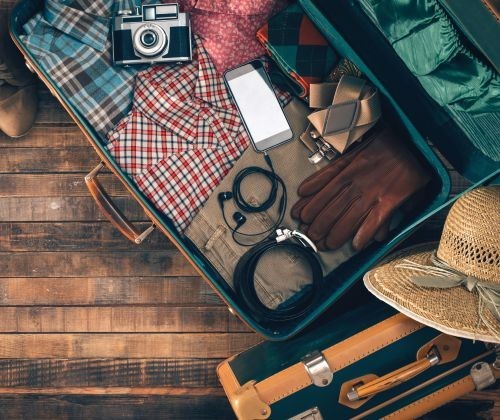
App reviews, Guides and Tutorials
 How to prepare your smartphone for travel
How to prepare your smartphone for travel
Thieves may not be able to grab your phone and run away with it, but many hackers will be interested in snatching up your passwords - especially the ones to your banking accounts - while you are traveling. So, here is a step-by-step guide for securing and preparing your smartphone for the holiday season.
Step 1: Create and use a strong lock screen password.
Choose one that has at least 12 characters and consists of a combination of letters, numbers and symbols. Yes, you are going to have a tough time typing it in anytime you want to use the phone, but that's the safest way to keep your private data for yourself, in case that something goes wrong.
While you are here, make sure to verify the passwords that are used for every account. Use long, complex passwords for all your financial accounts, and increase their security by activating two-factor authentication mechanisms.
Step 2: Download an app to track data usage.
The Internet is almost four decades old, and yet mobile data can be really expensive in some countries. To keep costs under control, fire up Google's Play Store, and then install one of the top rated data tracking apps. Frankly, if you own a smartphone that's got a newer version of Android, you don't need a dedicated app; the O.S. itself provides this feature, though it isn't very advanced. Make sure your phone sends a visual/audible alert when you use 80% of the allowed data.
Step 3: Update your mobile device.
You should do this the day before you leave; otherwise, you may miss a few important updates. Make sure that you've got the latest version of Android (security patches are essential) and then update the existing apps as well; some of these updates may fix serious security bugs.
Step 4: Install the needed apps.
Begin by uninstalling the ones you do not need. Some social media apps use a lot of data, because they sync info in the background even when the screen is off. So, get rid of those apps, at least until you return home. Then, install all the apps you will need during the trip. You may want an application that can find cheap flights, a weather app, one that can translate foreign languages, a currency converter, TripAdvisor, a Virtual Private Network (an app or service which will help you communicate with the loved ones securely), and so on.
Step 5: Prepare your phone for travel.
Experts say it's a good idea to put any device into airplane mode while you're on the road. The switch will disable all the radios; you won't be able to read the news or access your email while you are traveling, but your smartphone won't share any data with anyone either.
Step 6: Get, and then install a local SIM card.
If you really care about your personal data, using public Wi-Fi is a terrible idea. Yes, lots of people use free wireless connections in airports, restaurants, etc. but by doing so they are exposing themselves to substantial risks. The best solution by far is to use a local SIM card, which will often include hundreds of local calling minutes, SMS, and a decent amount of data. The local SIM may cost you $10 or so, but it will give you access to a secure Internet connection. Don't forget to change the SIM when you return to the US, of course.